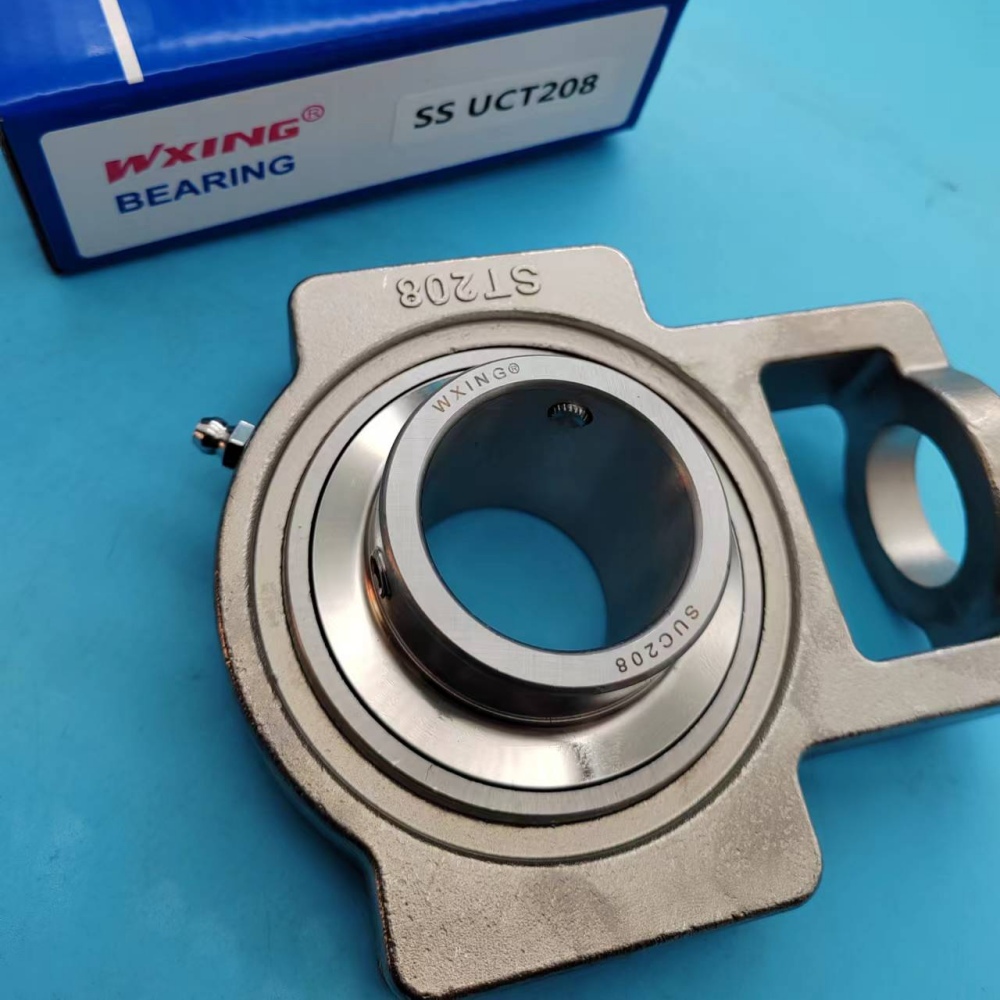CONTACT US
Zhejiang waxing electromechanical co.LTD.,Factory located in Shandong,Headquarters located in Zhejiang,China.
During the use of bearings, due to various reasons, there will be failure problems, so what are the failure forms of stainless steel bearings? We classify the failure modes of rolling bearings. These forms are the most basic three forms of rolling bearing failure. There are many reasons for bearing failure, and all the influencing factors of the design and manufacturing process are related to the failure of the bearing, which is not easy to judge by analysis. In general, it can be considered and analyzed from two aspects of use factors and internal factors.
Abrasion, poor lubrication, intrusion of impurities and dust will cause wear and tear, which will cause the INA bearing to lose its rotation accuracy and fail, which is the external cause. We should pay attention to maintenance and cleaning.
When the bearing speed is very low or swings intermittently, fatigue pitting generally does not occur. At this time, the bearing is often plastically deformed due to excessive static load or impact load, which makes the stainless steel bearing invalid. This is the problem of working strength. You must first pay for the bearing with the strength of the work, that is, what is the speed required for your work, and you must choose the bearing that matches it.
(1) Surface oxide layer
The steel surface under the action of instantaneous high temperature reacts with the oxygen in the air to form an extremely thin (20-30nm) iron oxide thin layer. It is worth noting that there is a corresponding relationship between the thickness of the oxide layer and the total thickness of the surface grinding and deterioration layer. This shows that the thickness of the oxide layer is directly related to the grinding process and is an important indicator of the grinding quality.
(2) Amorphous tissue layer
When the instantaneous high temperature in the grinding area makes the surface of the workpiece reach a molten state, the molten metal molecular flow is evenly coated on the working surface, and is cooled by the base metal at a very fast speed, forming an extremely thin layer of amorphous organizational layer. It has high hardness and toughness, but it is only about 10nm and can be easily removed in precision grinding.
(3) High temperature tempering layer
The instantaneous high temperature in the grinding area can make the surface be heated to a temperature higher than the tempering heating temperature of the workpiece within a certain depth (10-100nm). When the austenitizing temperature is not reached, as the heated temperature increases, the surface will undergo retempering or high temperature tempering corresponding to the heating temperature, and the hardness will also decrease. The higher the heating temperature, the greater the decrease in hardness.
(4) Second quenching layer
When the instantaneous high temperature in the grinding zone heats the surface layer of the workpiece above the austenitization temperature (Ac1), the austenitized structure of this layer is re-quenched into martensite structure during the subsequent cooling process. For workpieces with secondary quenching burns, there must be a high-temperature tempering layer with extremely low hardness under the secondary quenching layer.
(5) Grinding cracks
The secondary quenching burn will change the stress of the surface layer of the workpiece. The secondary quenching zone is in a state of compression, and the material in the high-temperature tempering zone below it has the largest tensile stress, and this is the place where the crack core is most likely to occur. Cracks propagate most easily along the original austenite grain boundaries. Severe burns can cause cracks (mostly cracks) to appear on the entire grinding surface and cause the workpiece to be scrapped.
During the work of the bearing, due to various complex reasons, such as unreasonable structure, poor material quality, low performance, defects on the working surface, shock, vibration, improper installation and poor lubrication, etc., stainless steel bearings can cause early failure. However, in some cases, some bearings are not put into use (operating) at all, but the original complete appearance of the user is damaged during the installation process, losing the usability and causing the bearing to fail prematurely.
Usually when we install stainless steel bearings, we will use the fit adjustment method to avoid mistakes. In order to ensure that the raceway deformation after the bearing is installed is small, the interference fit cannot be too large, and the centrifugal force at high speed and high temperature thermal expansion, or to counteract the normal pressure of the mating surfaces. Or make the mating surface loose, so the interference must be carefully calculated under the premise of considering the above two factors. The effective interference at normal temperature and speed may be invalid for INA bearings. If the calculation result is too contradictory Large (usually only at very high speeds).

Copyright © 2025 Zhejiang waxing electromechanical co.LTD. | All Rights Reserved Design
Hello, please leave your name email or WhatsApp here before chat online so that we won't miss your message and contact you smoothly.